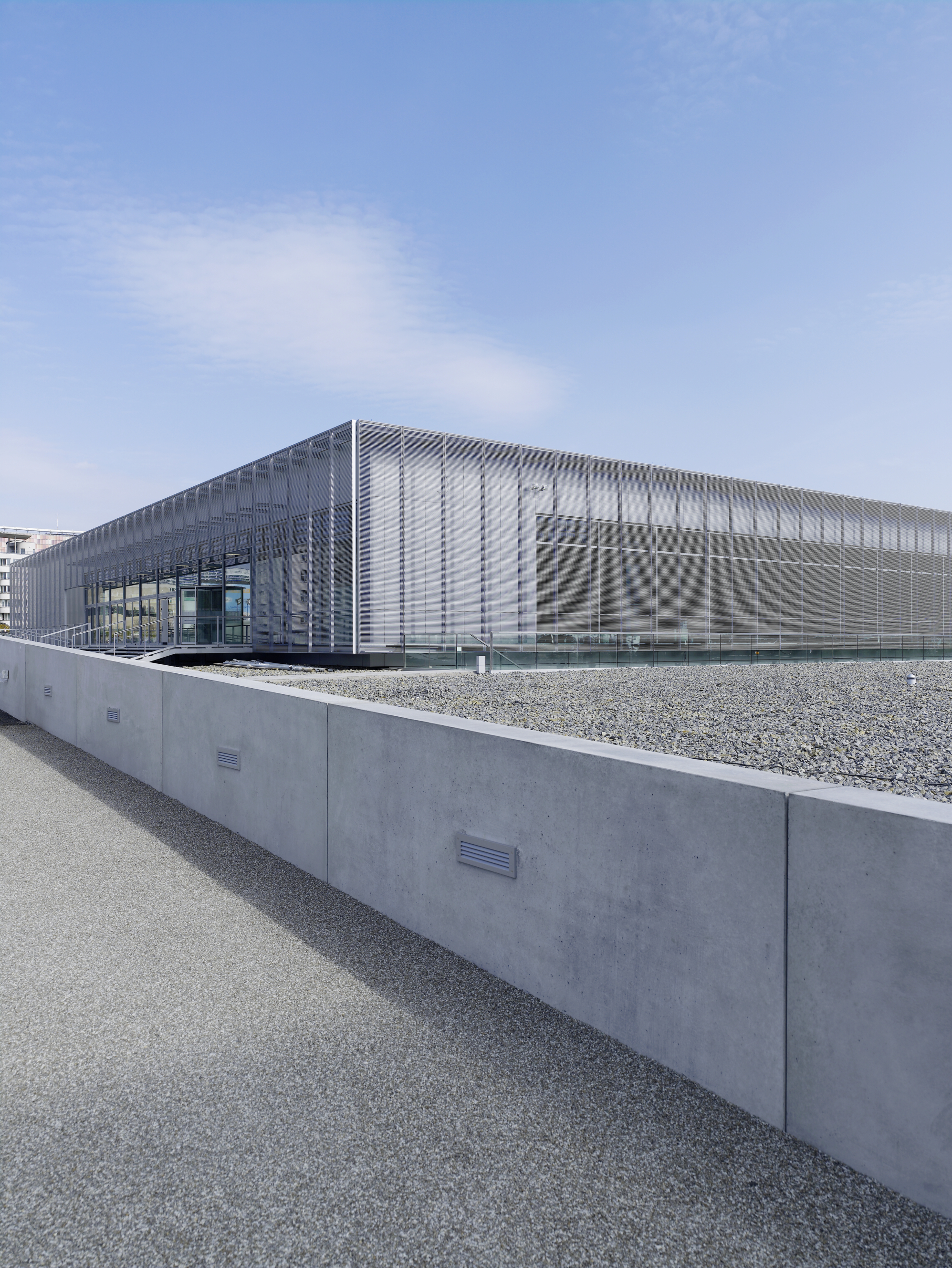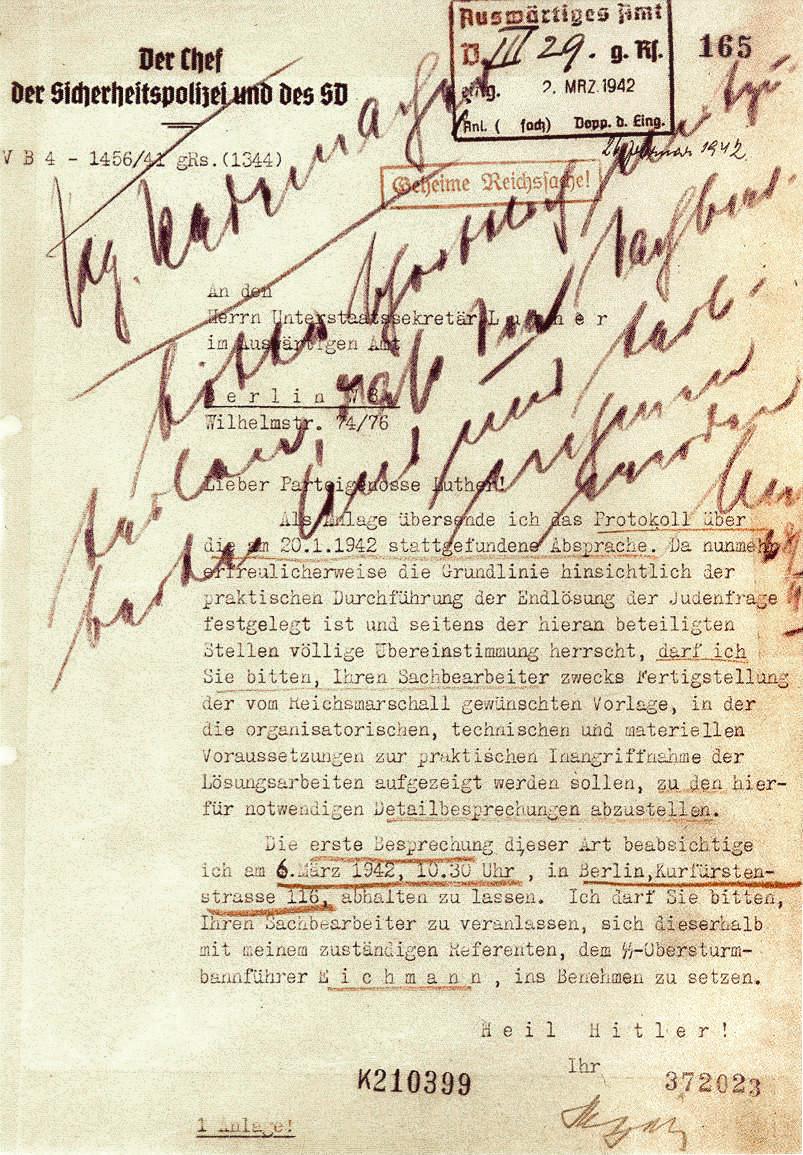|
Niederkirchnerstraße
Niederkirchnerstraße, or Niederkirchnerstrasse (see ß; ), is a street in Berlin, Germany and was named after Käthe Niederkirchner. The thoroughfare was known as Prinz-Albrecht-Straße until 1951 but the name was changed by the East German government. The street was the location of the SS Reich Security Main Office (RSHA), the headquarters of the ''Sicherheitspolizei'', SD, ''Einsatzgruppen'' and Gestapo. The site is now marked by the Topography of Terror memorial and a museum, which includes a permanent exhibition showing the crimes of Nazism. . Berlin City Getaway Guide. Course The street runs east-west from to Stresemannstraße near |
Käthe Niederkirchner
Käthe Niederkirchner (7 October 1909 - 28 September 1944) was a German Communist resistance activist who was fatally shot by Nazi paramilitaries on the night of 27/28 September 1944 at Ravensbrück concentration camp. Although the number of people who died under similar circumstances is incalculably large, one of several things that marks out the case of Käthe Niederkirchner is the extent to which she was celebrated by public authorities after her death. Biography Käthe "Katja" Niederkirchner was born in Berlin. Her father, Michael Niederkirchner (1882-1949) was an industrial worker active in the trades union movement who had moved with his wife to Berlin in 1906, having been born a member of the German-speaking minority community in Budapest. Käthe's mother, Helene, came from "a Slovak gypsy family" and could neither read nor write. According to Käthe's niece, Käte Niederkirchner, Helene was "sold into domestic service" when she was 11, after which she was employed ... [...More Info...] [...Related Items...] OR: [Wikipedia] [Google] [Baidu] |
Abgeordnetenhaus Von Berlin
The of Berlin (House of Representatives) () is the state parliament (''Landtag'') of Berlin, Germany according to the city-state's constitution. In 1993, the parliament moved from Rathaus Schöneberg to its present house on Niederkirchnerstraße in Mitte, which until 1934 was the seat of the Prussian Landtag. The current president of the parliament is Cornelia Seibeld ( CDU). History The was established by the new constitution of West Berlin in 1951. It replaced the former city legislature called ''Stadtverordnetenversammlung'' (city deputies assembly), established by the Prussian Reforms in 1808 and re-established by Allied-initiated state elections of 1946. Between 1951 and 1990 the was a parliament of restricted autonomy, since the Allied Control Council required that all its legislation and its elections, such as those of mayors and the senators (then still elected and not yet appointed by the mayor), be subject to Western Allied confirmation or rejection. After reun ... [...More Info...] [...Related Items...] OR: [Wikipedia] [Google] [Baidu] |
Wilhelmstraße
Wilhelmstraße, or Wilhelmstrasse (see ß; ; ) is a major thoroughfare in the central Mitte and Kreuzberg districts of Berlin, Germany. Until 1945, it was recognised as the centre of the government, first of the Kingdom of Prussia, and later of the unified German Reich, housing in particular the Reich Chancellery and the Foreign Office. The street's name was thus also frequently used as a metonym for overall German governmental administration: much as the term "Whitehall" is often used to signify the British governmental administration as a whole. In English, "the Wilhelmstrasse" usually referred to the German Foreign Office.See ''Daisy, Princess of Pless'' by Herself, p. 63. ''OED'', "Wilhelmstrasse" Course The Wilhelmstraße runs south from the Spree riverside through the historic Dorotheenstadt quarter to the Unter den Linden boulevard near Pariser Platz and Brandenburg Gate, where it takes on a line slightly east of south through adjacent Friedrichstadt, until its jun ... [...More Info...] [...Related Items...] OR: [Wikipedia] [Google] [Baidu] |
Topography Of Terror
The Topography of Terror () is an outdoor and indoor history museum in Berlin, Germany. It is located on Niederkirchnerstrasse, formerly Prinz-Albrecht-Strasse, on the site of buildings, which during the Nazi Germany, Nazi regime from 1933 to 1945 was the Schutzstaffel, SS Reich Security Main Office, the headquarters of the Sicherheitspolizei, Sicherheitsdienst, SD, Einsatzgruppen and Gestapo. The buildings that housed the Gestapo and SS headquarters were largely destroyed by Allied bombing during early 1945 and the ruins demolished after the war. The boundary between the American and Soviet zones of occupation in Berlin ran along the Prinz-Albrecht-Strasse, so the street soon became a fortified boundary, and the Berlin Wall ran along the south side of the street, renamed Niederkirchnerstrasse, from 1961 to 1989. The wall here was never demolished. The section adjacent to the Topography of Terror site is the longest extant segment of the outer wall, as the longer East Side Gall ... [...More Info...] [...Related Items...] OR: [Wikipedia] [Google] [Baidu] |
Preußischer Landtag
The Landtag of Prussia () was the representative assembly of the Kingdom of Prussia implemented in 1849, a bicameral legislature consisting of the upper House of Lords (''Herrenhaus'') and the lower House of Representatives (''Abgeordnetenhaus''). After World War I and the German Revolution of 1918–19 the ''Landtag'' diet continued as the parliament of the Free State of Prussia between 1921 and 1934, when it was abolished by the Nazi regime. History Kingdom of Prussia In the course of the 1848 Revolution, King Frederick William IV of Prussia and his Minister President Gottfried Ludolf Camphausen had agreed to call for the general election of a national assembly in all Prussian provinces. The Prussian National Assembly however was dismissed by royal decree of 5 December 1848 and the King imposed the 1848 Constitution of Prussia. It contained a catalog of fundamental rights that included freedom of religion, speech and the press, and provided for a bicameral parliament consis ... [...More Info...] [...Related Items...] OR: [Wikipedia] [Google] [Baidu] |
Wilhelmstrasse
Wilhelmstraße, or Wilhelmstrasse (see ß; ; ) is a major thoroughfare in the central Mitte and Kreuzberg districts of Berlin, Germany. Until 1945, it was recognised as the centre of the government, first of the Kingdom of Prussia, and later of the unified German Reich, housing in particular the Reich Chancellery and the Foreign Office. The street's name was thus also frequently used as a metonym for overall German governmental administration: much as the term "Whitehall" is often used to signify the British governmental administration as a whole. In English, "the Wilhelmstrasse" usually referred to the German Foreign Office.See ''Daisy, Princess of Pless'' by Herself, p. 63. ''OED'', "Wilhelmstrasse" Course The Wilhelmstraße runs south from the Spree riverside through the historic Dorotheenstadt quarter to the Unter den Linden boulevard near Pariser Platz and Brandenburg Gate, where it takes on a line slightly east of south through adjacent Friedrichstadt, until i ... [...More Info...] [...Related Items...] OR: [Wikipedia] [Google] [Baidu] |
Martin Gropius Bau
Martin-Gropius-Bau, commonly known as Gropius Bau, is an important exhibition space in Berlin, Germany. Originally a museum of applied arts, the building has been a listed historical monument since 1966. It is located at 7 Niederkirchnerstraße in Berlin-Kreuzberg. History and architecture The building was erected between 1877 and 1881 by the architects Martin Gropius, a great uncle of Walter Gropius, and Heino Schmieden in the neo-Renaissance style. The building officially opened in 1881.Berliner Festspiele - Martin-Gropius-Bau . Retrieved 30 January 2018 The ground plan is quadratic (length of each side c. 70 m; building height c. 26 m). The exhibition rooms surround an imposing atrium decorated with mosaics and the [...More Info...] [...Related Items...] OR: [Wikipedia] [Google] [Baidu] |
Sicherheitspolizei
The often abbreviated as SiPo, is a German term meaning "security police". In the Nazi Germany, Nazi era, it referred to the state political and criminal investigation security agency, security agencies. It was made up by the combined forces of the Gestapo (secret state police) and the ''Kriminalpolizei (Nazi Germany), Kriminalpolizei'' (criminal police; Kripo) between 1936 and 1939. As a formal agency, the SiPo was incorporated into the Reich Security Main Office (RSHA) in 1939, but the term continued to be used informally until the end of World War II in Europe. Origins The term originated in August 1919 when the ''Reichswehr'' set up the ''Sicherheitswehr'' as a militarised police force to take action during times of riots or strikes. Owing to limitations in army numbers, it was renamed the to avoid attention. They wore a green uniform, and were sometimes called the "Green Police". It was a military body, recruiting largely from the ''Freikorps'', with NCOs and officers from ... [...More Info...] [...Related Items...] OR: [Wikipedia] [Google] [Baidu] |
Reich Security Main Office
The Reich Security Main Office ( , RSHA) was an organization under Heinrich Himmler in his dual capacity as ''Chef der Deutschen Polizei'' (Chief of German Police) and , the head of the Nazi Party's ''Schutzstaffel'' (SS). The organization's stated duty was to fight all "enemies of the Reich" inside and outside the borders of Nazi Germany. From its very inception, the RSHA was a central institution for the Nazis, playing a pivotal role in orchestrating and executing the Holocaust. Formation and development In 1934, the Nazi regime accelerated the centralization of state power, abolishing the sovereignty of Germany's federal states and subordinating them directly to the Reich government. Even before the formal creation of the Reich Security Main Office (RSHA), the Gestapo under Himmler had already asserted nationwide authority, laying the groundwork for a unified security apparatus. These moves toward central control were further reinforced by the establishment of the ''Volksger ... [...More Info...] [...Related Items...] OR: [Wikipedia] [Google] [Baidu] |
Einsatzgruppen
(, ; also 'task forces') were (SS) paramilitary death squads of Nazi Germany that were responsible for mass murder, primarily by shooting, during World War II (1939–1945) in German-occupied Europe. The had an integral role in the implementation of the so-called " Final Solution to the Jewish question" () in territories conquered by Nazi Germany, and were involved in the murder of much of the intelligentsia and cultural elite of Poland, including members of the Catholic priesthood. Almost all of the people they murdered were civilians, beginning with the intelligentsia and swiftly progressing to Soviet political commissars, Jews, and Romani people, as well as actual or alleged partisans throughout Eastern Europe. Under the direction of Heinrich Himmler and the supervision of SS- Reinhard Heydrich, the operated in territories occupied by the ''Wehrmacht'' (German armed forces) following the invasion of Poland in September 1939 and the invasion of the Soviet Un ... [...More Info...] [...Related Items...] OR: [Wikipedia] [Google] [Baidu] |
Sicherheitsdienst
' (, "Security Service"), full title ' ("Security Service of the ''Reichsführer-SS''"), or SD, was the intelligence agency of the Schutzstaffel, SS and the Nazi Party in Nazi Germany. Established in 1931, the SD was the first Nazi intelligence organization and the Gestapo (formed in 1933) was considered its sister organization through the integration of SS members and operational procedures. The SD was administered as an independent SS office between 1933 and 1939. That year, the SD was transferred over to the Reich Security Main Office (''Reichssicherheitshauptamt''; RSHA), as one of its seven departments. Its first director, Reinhard Heydrich, intended for the SD to bring every single individual within the Third Reich's reach under "continuous supervision". Following Germany's defeat in World War II, the tribunal at the Nuremberg trials officially declared that the SD was a criminal organisation, along with the rest of Heydrich's RSHA (including the Gestapo) both individually ... [...More Info...] [...Related Items...] OR: [Wikipedia] [Google] [Baidu] |





